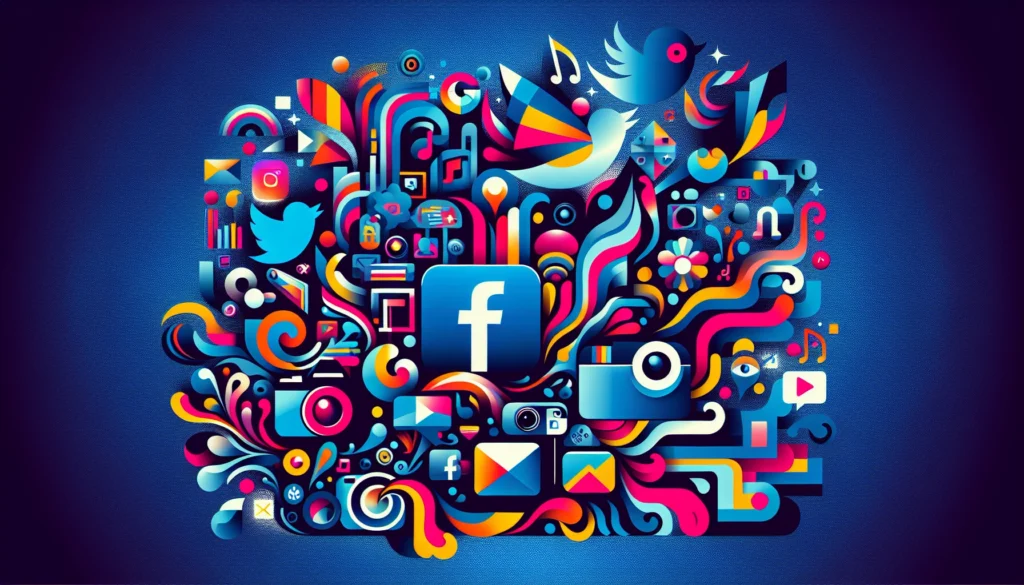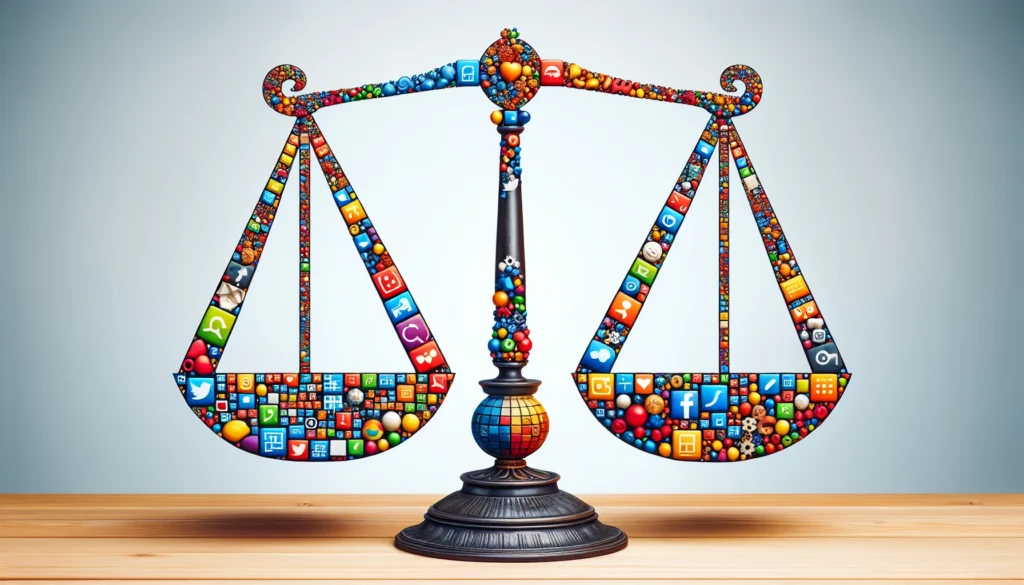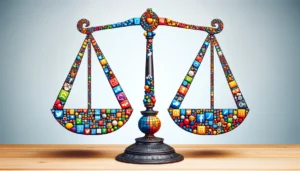Table of Contents[Hide][Show]
- Conclusion
Frequently Asked Questions+−
- What is the main difference between User Generated Content (UGC) and Brand Generated Content (BGC)?
- How can integrating UGC and BGC benefit my marketing strategy?
- What are some effective ways to encourage customer participation in creating UGC?
- What legal considerations should I consider when using UGC in my marketing materials?
- How can I measure the success of my BGC campaigns?
Are you trying to decide between user generated content vs brand generated content for your marketing strategy? Understanding the critical differences between these two types of content can help you determine which will best suit your goals. In this article, we will explore how user generated content offers authenticity and trust while being cost-effective, and how brand generated content gives you control over your messaging and professional quality. Let’s dive in to find out the best fit for your brand’s content marketing efforts.
Understanding User Generated Content (UGC)

User-generated content (UGC) is a treasure trove for marketers. It consists of original, brand-specific content created by social media users and shared across various channels. From heartfelt testimonials to spontaneous product photos, UGC is the modern-day word-of-mouth, capturing genuine customer experiences and enthusiasm. This authenticity differentiates UGC from traditional advertising, making it an invaluable asset in today’s content-saturated world.
What makes UGC so powerful? For starters, it’s incredibly influential in shaping purchasing decisions by showcasing real-world experiences of a product or service. Consumers are much more receptive to UGC than the more salesy, ‘look at me’ advertising content, which often feels impersonal. This type of content helps brands establish a personal connection with their audience, fostering greater customer loyalty and higher conversion rates.
Furthermore, UGC strengthens a brand’s online presence and sparks a snowball effect. As more customers share their positive experiences, it encourages others to do the same, creating a continuous stream of organic UGC. With 86% of consumers more likely to trust a brand that shares UGC, it’s clear that leveraging this type of content is essential for modern marketing success.
Types of User-Generated Content
UGC comes in various forms, each with its unique impact and reach. Online reviews and testimonials are the most straightforward type of UGC, offering honest opinions from real customers that brands can share on social media and websites. These reviews act as social proof, making it easier for potential buyers to trust the brand and make purchasing decisions.
Social media and YouTube videos are also popular forms of UGC, often featuring product hauls or unboxing experiences that capture the excitement and authenticity of user interactions with a product. Blog posts that mention a brand or product, either in standalone reviews or broader contexts, add depth to the UGC mix, while photos showing customers using a product are among the most common and impactful UGC types. These various content types create a rich tapestry of user-generated experiences that enhance a brand’s credibility and reach.
Examples of Effective UGC

Brands like GoPro have mastered the art of leveraging UGC to boost engagement and foster loyalty. GoPro encourages users to share their adventure videos and images captured on their devices, leading to over 6,000 user-generated videos daily. Their top three UGC videos, all originally filmed by customers, boast over 400 million views combined, showcasing the immense power of UGC. GoPro also promotes daily photo challenges, inspiring consumers to get creative and share their experiences.
Starbucks and Lululemon are other prime examples of brands that use UGC effectively. Starbucks’ #RedCupContest on Instagram encourages customers to share photos of their holiday-themed cups, creating a festive buzz and enhancing brand visibility. Similarly, lululemon’s #thesweatlife campaign invites followers to share photos of their fitness journeys, increasing brand awareness and building a community of engaged customers.
Exploring Brand Generated Content (BGC)

Brand-generated content (BGC) refers to branded content created and produced by a brand to promote its products, services, values, or messaging. Unlike UGC, BGC is meticulously crafted by the brand’s marketing team to align with the brand’s objectives, ensuring a coherent and unified message. This type of content allows brands to have complete control over their narrative, making it possible to highlight key benefits and emphasize specific product details.
The primary benefit of BGC is the ability to:
Maintain consistent branding and controlled messaging
Manage every aspect of content creation
Ensure that messages are clear, professional, and targeted to specific audiences
Build a strong brand voice
Drive new customers
Retain existing clients
Generate sustainable revenue
This control helps brands achieve their goals, build brand loyalty, and establish a strong presence in the market through their brand’s marketing efforts.
However, the effectiveness of BGC depends heavily on how well it resonates with the audience. Brands must invest in high-quality visuals, compelling storytelling, and strategic content distribution to make a lasting impact. When done right, BGC can complement UGC, creating a balanced content strategy that leverages the strengths of both types of content.
Forms of Brand Generated Content
BGC comes in various forms, each designed to serve specific marketing goals. Some common types of BGC include:
Blog posts: providing valuable information and insights that help attract and retain customers
Branded videos: using visual storytelling to engage audiences and convey complex messages in an easily digestible format
Advertisements: whether traditional or digital, geared towards showcasing product features and benefits in a persuasive manner
These different forms of BGC can be used strategically to reach and engage your target audience.
Product launches are also an essential aspect of BGC, allowing brands to create buzz and excitement around new offerings. By presenting product information in a polished and professional manner, brands can fill their business pages with content that informs and persuades potential customers to take action.
Successful BGC Campaigns
Coca-Cola and BMW are two brands that have executed highly successful BGC campaigns. Coca-Cola’s ‘Share a Coke’ campaign personalized bottles with popular names, enhancing customer engagement and creating a personal connection with the brand. This campaign resonated with consumers on an emotional level, leading to increased sales and brand loyalty.
BMW’s ‘The Hire’ series featured short films directed by famous filmmakers, merging high-quality content with brand promotion. These films showcased BMW’s vehicles and engaged audiences through compelling storytelling, demonstrating the power of well-executed BGC.
Key Differences Between UGC and BGC
Understanding the key differences between UGC and BGC is crucial for developing an effective content strategy. One of the most significant differences lies in authenticity and trust. UGC is perceived as more genuine because it reflects real customer experiences without commercial influence. This authenticity helps build trust and confidence in potential customers, making UGC a powerful tool for increasing conversion rates.
UGC is often more cost-effective in terms of cost and resource allocation since customers create it voluntarily. This reduces content creation costs and allows brands to scale their content efforts more efficiently. On the other hand, BGC requires significant investment in time, money, and resources to produce high-quality content that aligns with the brand’s goals.
Another key difference is the level of control over available content. This can have significant implications for the overall user experience and customization options. Brands have complete control over BGC, ensuring consistency in messaging and visual aesthetics. However, this can sometimes make BGC feel less authentic compared to UGC, which is created by users and offers less direct control over quality and messaging.
Authenticity and Trust
UGC is often seen as more authentic and trustworthy because it reflects genuine customer experiences and opinions. This unscripted and honest content enhances brand authenticity and makes it easier for prospects to trust the brand and make purchasing decisions. Customer testimonials and reviews within UGC are highly effective in converting prospects into loyal customers.
In contrast, BGC can sometimes be perceived as less authentic due to its commercial nature. However, when combined with UGC, BGC can leverage the credibility of user content to enhance its trustworthiness. A brand can couple UGC with original content to get the maximum impact. Ads featuring UGC, for example, receive 73% more positive comments on social networks compared to traditional ads.
Cost and Resource Allocation
UGC is a cost-effective way to enhance visibility and engagement without the high advertising costs. Since UGC is created voluntarily by customers, it reduces content creation costs and allows brands to scale their content efforts more easily. This is particularly beneficial for brands looking to create UGC and produce a high volume of content without incurring significant expenses, making creating UGC an attractive strategy.
In contrast, creating BGC requires significant time, money, and resource investment. While this allows for complete control over the quality and messaging of the content, it can also make it more challenging to produce and scale content at the same rate as UGC.
Control Over Content

One of the main advantages of BGC is the complete control brands have over the narrative and quality of the content. This allows brands to ensure consistency in messaging and visual aesthetics, crucial for maintaining a professional and cohesive brand image. BGC can be anticipated, scheduled, and aligned with product launches and promotions, ensuring quality and consistency in publishing frequency.
On the other hand, UGC offers less direct control over quality and messaging since users create it. While this can sometimes result in content that doesn’t align perfectly with the brand’s goals, it also adds an element of authenticity and relatability that consumers highly value. Brands can still maintain some level of control by curating and approving UGC before sharing it on their official channels.
Benefits of Integrating Both UGC and BGC
Integrating UGC and BGC in your marketing strategy can create a well-rounded and effective content approach. Combining UGC’s authenticity and social proof with BGC’s control and professionalism allows brands to leverage the strengths of both types of content. This integration can drive brand awareness, foster audience engagement, and enhance marketing effectiveness.
One of the key benefits of integrating UGC and BGC is the improved organic reach.
UGC’s credibility and relatability can attract a wider audience
BGC’s strategic messaging ensures that the brand’s core values and objectives are communicated effectively.
This combination creates a sense of belonging and community among customers, further enhancing brand loyalty.
By leveraging both UGC and BGC, brands can create a balanced content strategy that resonates with their audience on multiple levels. This approach enhances engagement and conversion rates and broadens the brand’s reach and impact.
Enhanced Engagement
Combining UGC and BGC can significantly enhance audience engagement. Engagement rates increase by 28% when consumers view a mix of user-generated and professional brand content. Social campaigns incorporating UGC see a 50% lift in engagement, as users are more likely to interact with genuine and relatable content.
By featuring user-generated content in their posts, brands can:
Encourage more users to share their experiences, further boosting overall engagement
Leverage the creativity and passion of their audience, fostering deeper connections and building a sense of community
Incorporate customer feedback and testimonials into brand-generated content to enhance its relatability and trustworthiness.
Increased Conversion Rates
Integrating UGC and BGC can have a positive impact on conversion rates. Websites incorporating UGC experience 29% higher conversion rates than those without user-generated content. By including UGC in the online purchase path, brands can create a more persuasive and trustworthy shopping experience, leading to a 10% increase in conversion rates.
UGC acts as social proof, providing real-life evidence of a product’s value and encouraging potential customers to make purchasing decisions. When combined with the strategic messaging of BGC, UGC can help drive awareness, attract new followers, and convert customers more effectively.
Broader Reach
Combining UGC and BGC helps brands reach a wider audience by catering to different consumer preferences and leveraging user and brand networks. UGC is typically shared by the creators themselves, reaching their networks and amplifying the brand’s reach organically. This organic amplification can introduce the brand to new potential customers who might not have encountered it otherwise.
Social media platforms are ideal for showcasing UGC, allowing brands to extend their reach through user contributions. By leveraging the networks of individuals unfamiliar with the brand, UGC can significantly broaden the brand’s visibility and impact on social media channels.
Implementing UGC in Your Marketing Strategy
Incorporating UGC into your marketing strategy requires thoughtful planning and execution. Hosting social media contests can be an effective way to generate UGC. For instance, Oreo’s recent Facebook campaign asked fans to submit ideas for their latest cookie flavor in exchange for a $500k prize. Creating a unique brand hashtag also allows you to track customer posts on social media, making it easier to find and use UGC.
Additionally, featuring real user reviews on your website can leverage positive word-of-mouth and enhance trust among potential customers. Here are some strategies to consider:
Repurpose user-generated content (UGC) for your marketing strategy
Partner with content creators and influencers to showcase their experiences with your product or service
Compile customer testimonials into ad creatives to create a dynamic and engaging content mix that resonates with your audience.
By implementing these strategies, you can effectively leverage user reviews and enhance your marketing efforts.
To effectively implement UGC, it’s essential to encourage customer participation, curate and share UGC thoughtfully, and consider legal aspects to ensure compliance and maintain ethical standards.
Encouraging Customer Participation
Encouraging customer participation in UGC creation can be achieved through contests and incentives. Launching a compelling challenge that excites and engages users can lead to quality UGC. For example, Calvin Klein’s #mycalvins campaign encourages users to post photos of themselves in Calvin Klein underwear, resulting in over 870,000 posts on Instagram.
Offering incentives such as discounts or competition entries can further motivate customers to create content. Creating an ambassador program can also help incentivize loyal customers to consistently produce UGC. By sending gentle reminders via email marketing to encourage customers to leave reviews post-purchase and asking for feedback directly from users, brands can foster a continuous stream of user-generated content.
Curating and Sharing UGC

Curating and sharing UGC effectively involves:
Monitoring and approving content to maintain quality and relevance
Using platforms like Cohley to create high-quality UGC while maintaining brand control and quality
Giving credit to the original creator when reposting UGC to show gratitude and maintain ethical standards.
Brands like Nike regularly generate and repost user content linked to hashtags like #AirMaxMondays on their social accounts. By showcasing customer photos on product pages, brands can provide social proof and help potential customers visualize the products in real-life settings. This approach not only enhances engagement but also builds trust and credibility.
Legal Considerations
Addressing legal considerations is essential when using UGC in marketing materials. Explicit consent from users is necessary if their photos or videos are to be used in brand materials to avoid copyright issues and show appreciation for the original poster’s content. Clear disclaimers and disclosures regarding how the brand will use UGC ensure transparency and compliance.
In contrast, brand-generated content has no rights management issues because the brand owns the posts outright. By considering these legal considerations, brands can ethically and effectively leverage UGC in their marketing strategies.
Maximizing the Impact of BGC
Maximizing the impact of BGC as part of the brand’s marketing efforts involves understanding the audience’s needs and preferences, utilizing high-quality visuals, and crafting compelling stories. Effective brand-generated content can attract attention by incorporating emotional elements and aligning with current events or trending topics.
Consistency in branding and messaging across all platforms is crucial for maintaining a professional brand image. Using a standardized color palette and logo placement helps achieve visual consistency while ensuring that all content follows the brand’s voice and tone and maintains coherence.
Measuring the success of BGC campaigns through key performance metrics is essential for evaluating effectiveness. Tracking engagement rates, conversion rates, and audience reach and utilizing A/B testing can provide valuable insights into what resonates best with your audience.
Crafting Compelling Stories
Crafting engaging brand stories that resonate with audiences involves:
Incorporating emotional elements
Aligning with current events or trending topics
Including clear structures like exposition, conflict, climax, and resolution to engage audiences
Identifying relatable and engaging characters that embody your brand’s values
These elements can make your brand narrative more captivating.
Testing and refining your brand story with a small audience can help identify what resonates before a full launch, ensuring that your content strategy is aligned with your marketing goals. Crafting compelling stories that align with your brand’s values is essential for engaging your target audience and achieving marketing success.
Maintaining Consistency
Maintaining consistency in branding and messaging across BGC is crucial for building brand recognition and trust among consumers. Consistent branding across all platforms strengthens brand identity and conveys the brand’s messaging accurately. Using a standardized color palette and logo placement helps achieve visual consistency across all brand-generated content.
Consistency in visual elements, messaging, and tone across various channels is essential for maintaining a professional brand image. Ensuring that all content follows the brand’s voice and tone is crucial for maintaining coherence and reinforcing the brand’s identity.
Measuring Success
Measuring the success of BGC campaigns involves tracking key performance metrics such as engagement rates, conversion rates, and audience reach. These metrics provide valuable insights into the effectiveness of brand-generated content and help identify areas for improvement. A/B testing can determine which types of content resonate best with your audience, allowing for data-driven optimization of your content strategy.
By regularly evaluating the performance of BGC campaigns, brands can refine their content marketing efforts and ensure that their messaging is impactful and aligned with their marketing goals. This continuous improvement process is essential for maximizing the impact of BGC and achieving long-term marketing success.
Case Studies: Brands Successfully Using UGC and BGC
Analyzing case studies of brands successfully using both UGC and BGC can provide valuable insights into effective content strategies. Brands like Nike and Airbnb have leveraged both types of content to create impactful marketing campaigns that resonate with their audiences. Combining UGC’s authenticity with BGC’s control and professionalism, these brands have built strong brand loyalty and achieved significant engagement and conversion rates.
Nike encourages customer participation by featuring user-generated content in their social media campaigns, enhancing engagement and authenticity. Airbnb combines UGC with BGC to create marketing content that feels authentic and relatable to its audience. By curating high-quality UGC and blending it with professionally produced content, Airbnb has successfully created campaigns that resonate with a broad audience.
These case studies highlight the benefits of integrating UGC and BGC in marketing strategies and demonstrate how brands can effectively leverage both types of content to achieve their marketing goals.
Nike’s Use of UGC and BGC
Nike engages its online community by:
regularly generating and reposting user content linked to hashtags like #AirMaxMondays
enhancing engagement and building a sense of community among Nike’s customers
using a mix of user-generated and brand-generated content
maintaining a strong presence on social media
driving brand engagement
Nike’s strategy of leveraging both UGC and BGC allows the brand to create a balanced content mix that resonates with its audience on multiple levels. This approach has helped Nike build strong brand loyalty and increase engagement and conversion rates.
Airbnb’s Hybrid Approach
Airbnb combines user-generated content, such as guest reviews and photos, with professionally produced content to create authentic marketing campaigns. This hybrid approach allows Airbnb to leverage the authenticity of UGC while ensuring that the brand’s core values and messaging are communicated effectively.
By blending UGC and BGC, Airbnb crafts marketing campaigns that resonate more deeply with audiences and build trust and relatability. This approach has helped Airbnb create a community among its users and achieve significant engagement and conversion rates.
Conclusion
In conclusion, both User Generated Content (UGC) and Brand Generated Content (BGC) offer unique strengths that can enhance your marketing strategy. UGC brings authenticity, trust, and cost-effectiveness, while BGC ensures controlled messaging, consistency, and professionalism. By integrating both types of content, brands can create a balanced and effective content strategy that drives engagement, conversion rates, and broader reach.
As demonstrated by successful brands like Nike and Airbnb, leveraging both UGC and BGC can create a well-rounded content approach that resonates with audiences on multiple levels. By encouraging customer participation, curating and sharing UGC thoughtfully, and considering legal aspects, brands can effectively implement UGC in their marketing strategies. Additionally, maximizing the impact of BGC through compelling storytelling, consistency, and measuring success is crucial for achieving long-term marketing goals.
Frequently Asked Questions
What is the main difference between User Generated Content (UGC) and Brand Generated Content (BGC)?
The main difference between UGC and BGC is that UGC is created by customers, reflecting their genuine experiences. In contrast, BGC is created and controlled by the brand to maintain consistent messaging and professionalism.
How can integrating UGC and BGC benefit my marketing strategy?
Integrating UGC and BGC in your marketing strategy can boost engagement and conversion rates and expand your reach by blending the authenticity of UGC with the controlled messaging of BGC. It’s a win-win!
What are some effective ways to encourage customer participation in creating UGC?
Hey there! To encourage customer participation in creating UGC, consider hosting social media contests, offering incentives, creating ambassador programs, and using unique hashtags. These methods can spur engagement and creative content from your customers.
What legal considerations should I consider when using UGC in my marketing materials?
When using UGC in your marketing materials, get permission from the users, use disclaimers, and give proper credit to original creators to avoid legal issues and uphold ethical standards. Always prioritize respecting creators’ rights and maintaining transparency.
How can I measure the success of my BGC campaigns?
To measure the success of your BGC campaigns, track key metrics like engagement rates, conversion rates, and audience reach, and consider using A/B testing for better insights.

 Blogging for Business: The Key to Growth
Blogging for Business: The Key to Growth